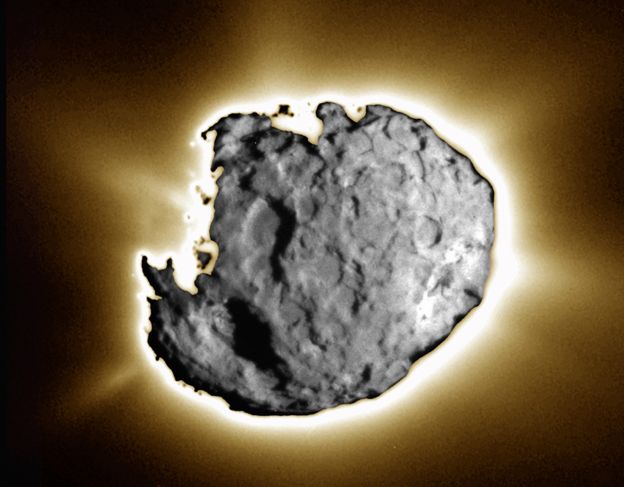Going Wild

Explanation:
Dynamic jets of gas and dust surround
one of the most
active
planetary surfaces in the solar system
in
this
wild-looking picture of a
comet
nucleus.
The comet's
designation is 81P/Wild 2 of course
(sounds like "vilt 2"), and the picture is a
composite of two images recorded by the
Stardust spacecraft's
navigation camera during its January 2nd
flyby.
The composited images consist of a
short exposure recording startling surface details of
Wild 2's nucleus and a longer exposure, taken 10 seconds later,
revealing material streaming from the surface.
Pitted and eroded after billions of
years of outgassing and
meteorite impacts, the nucleus pictured is only
about 5 kilometers in diameter,
while the jets of dust and gas ultimately
leave trails millions of kilometers long.
Stardust is scheduled to return samples of Wild 2's
cometary dust,
picked up during the flyby, to Earth in January 2006.
Authors & editors:
Robert Nemiroff
(MTU) &
Jerry Bonnell
(USRA)
NASA Web Site Statements, Warnings,
and Disclaimers
NASA Official: Jay Norris.
Specific
rights apply.
A service of:
LHEA at
NASA /
GSFC
& Michigan Tech. U.

